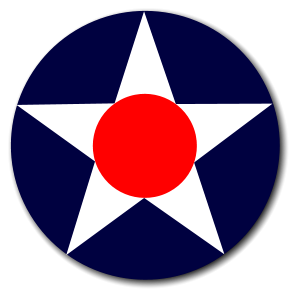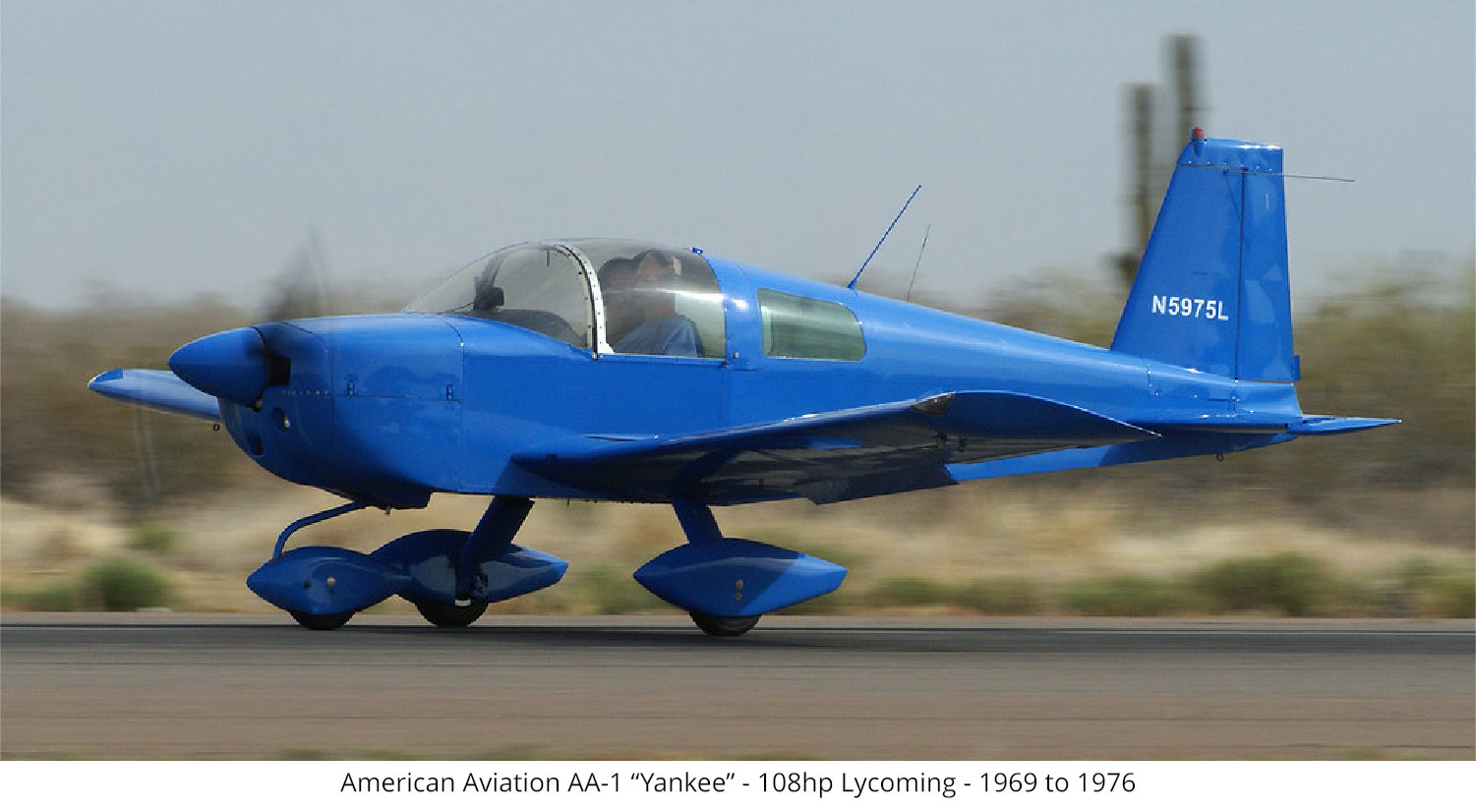 Grumman Owners and Pilots Association Grumman Owners and Pilots Association"Building on our proud AYA heritage..."
|
- Home
- Aircraft
- Browse By Model
- AA-1/A/B/C Yankee
AA-1/A/B/C Yankee |

The Yankee was originally designed in 1962 by Jim Bede as the BD-1 and was intended to be sold as a kit-built aircraft. Bede decided to certify the design under the then-new FAR Part 23 rules and offer it as a completed aircraft. No BD-1 kits were ever sold. The prototype first flew on July 11, 1963 and featured folding wings for trailering and ease of storage. Bede formed a company, Bede Aviation Corporation, based in Cleveland Ohio, to produce the aircraft, but the BD-1 never entered production as a certified aircraft. At that time the FAA was hesitant to certify a light aircraft with folding wings. The certification process was complex and expensive and disagreements arose between Bede and the other shareholders. As a result, Bede was ousted by his business partners and the company renamed American Aviation. |
AA-1 Yankee ClipperAmerican Aviation's engineers reworked the wing to a non-folding design, easing FAR Part 23 certification. Other changes included adding extended wing tips to improve rate-of-climb, an anti-servo tab on the elevator along with a centering spring system to increase longitudinal stability and stall strips to improve handling during a stall. The company designated the redesigned aircraft the AA-1 Yankee Clipper. The AA-1 was certified under FAR Part 23 on August 29, 1967 with the first production AA-1 flying on May 30, 1968. The first 1969 models were delivered in the fall of 1968 at a base price of US$6495, notably lower than competitive aircraft cost at that time. American Aviation built 459 examples of the AA-1 Yankee Clipper between 1969 and 1971 at their factory in Cleveland, Ohio. AA-1A Trainer
In 1971 American Aviation modified the NACA 64-415 airfoil used on the AA-1's wing, creating the AA-1A Trainer. The re-contoured leading edge produced softer stall characteristics and permitted lower approach speeds. While this did tame the AA-1's sharp stall, it also reduced the cruise speed compared to the original AA-1 by 10 mph. First flight was on March 25, 1970 and 470 AA-1As were built in 1971–72. |
AA-1B Trainer and TR-2
Grumman bought American Aviation in 1971, renaming it Grumman American Aviation and beginning in late 1972 sold the 1973 model year design as the Grumman American AA-1B Trainer for school use. The variant designed for the personal-use market was called the TR-2 and it featured a standard radio and trim package. The AA-1B was produced until 1976. 680 AA-1Bs were produced. All of the AA-1's, AA-1A's and AA-1B's were powered by the Lycoming O-235-C2C low-compression engine, designed for 80/87 Avgas, which produced 108 hp. AA-1C Lynx and T-CatThe Grumman light aircraft line was then acquired by Gulfstream Aerospace in 1977 who formed it into their light aircraft division, Gulfstream American, in Savannah, Georgia. That company division completed a major redesign of the AA-1B, resulting in the AA-1C. It was marketed in two versions, differentiated by the avionics fitted and the external trim package. The Lynx was targeted at private owners while the T-Cat was the flying school trainer. These names were chosen to position the aircraft in the Gulfstream American line which, at that time featured the Cheetah, Tiger and the Cougar. The AA-1C received a new larger horizontal tail and other significant improvements, including a 115 hp Lycoming O-235-L2C high-compression engine designed for 100LL fuel, which brought the cruise speed back up to that of the original 108 hp Yankee. 211 AA-1C's were produced in 1977 and 1978. The last AA-1C was produced by Gulfstream American in 1978.[1] Overall, 1820 AA-1 family aircraft were built between 1969 and 1978. Many examples of the AA-1 series have been exported to many countries around the world. Pilots in Europe to acquire the type include those resident in Belgium, Denmark, Finland, Germany, Norway, Sweden, Switzerland and the United Kingdom. Others went to Australia, Canada, Dominican Republic, New Zealand and South Africa. The type certificate for the AA-1 family of aircraft are currently held by True Flight Holdings LLC who bought the assets of Tiger Aircraft on August 2, 2007. |
Specifications and Performance (AA-1): | AA-1 Documentation: |
